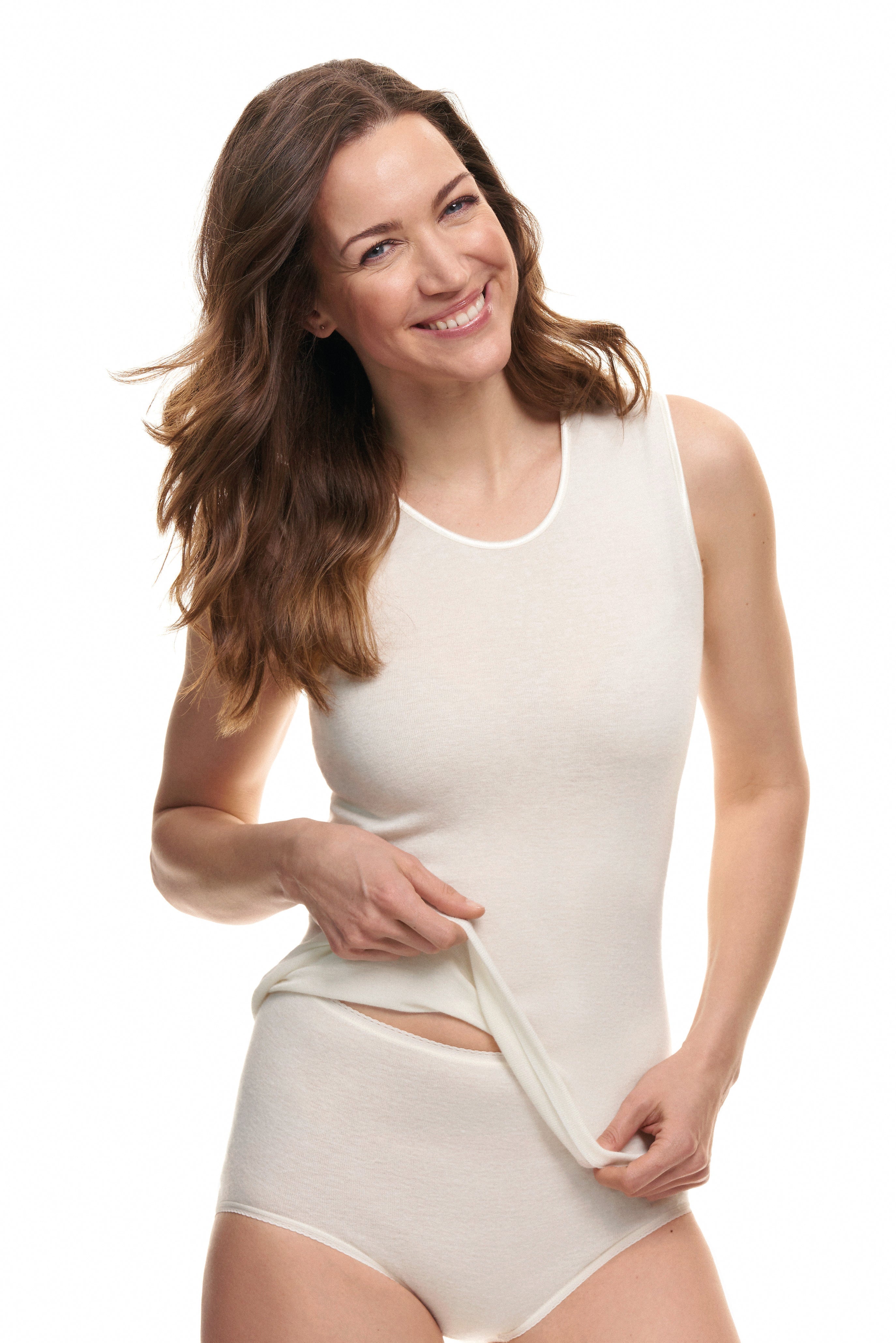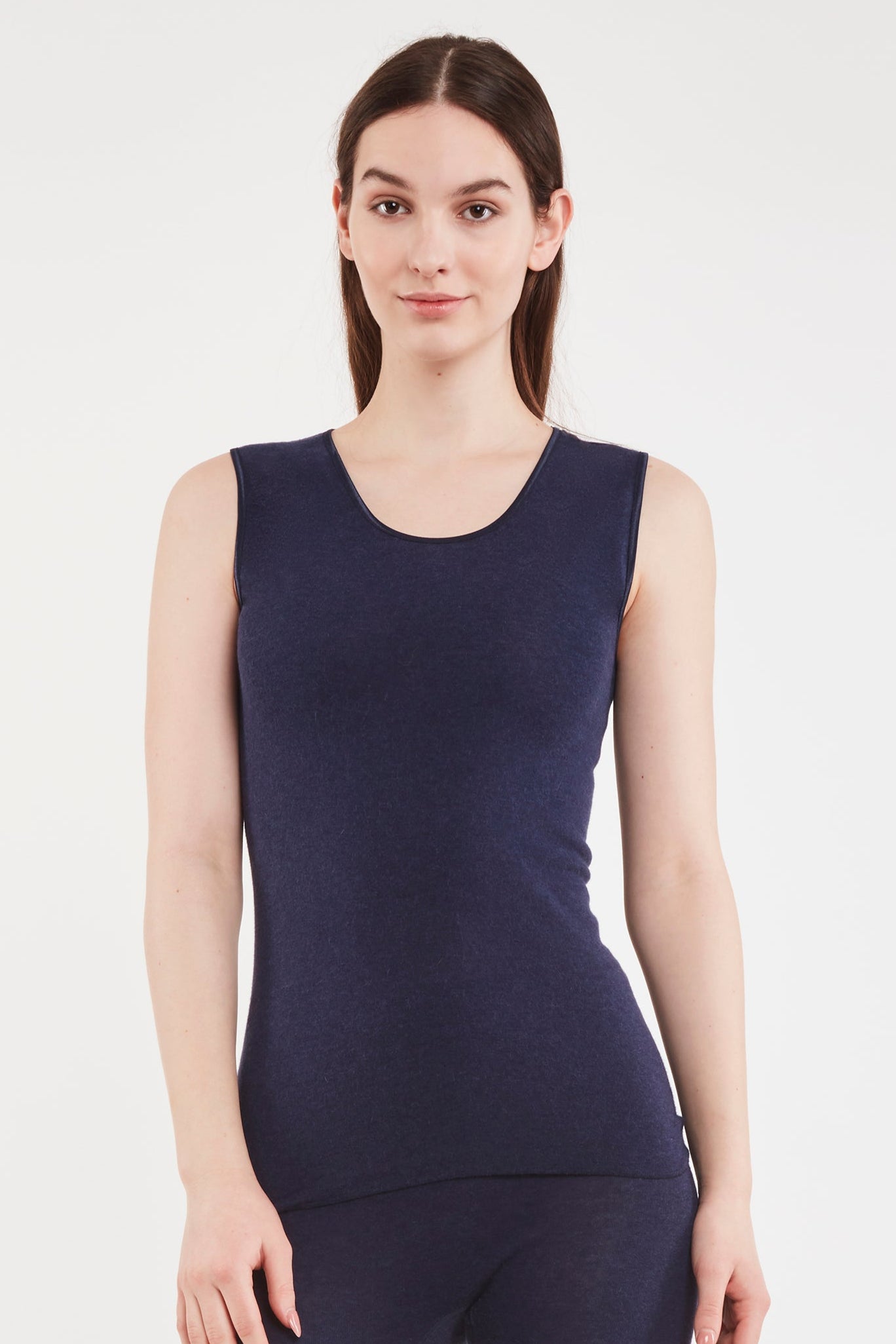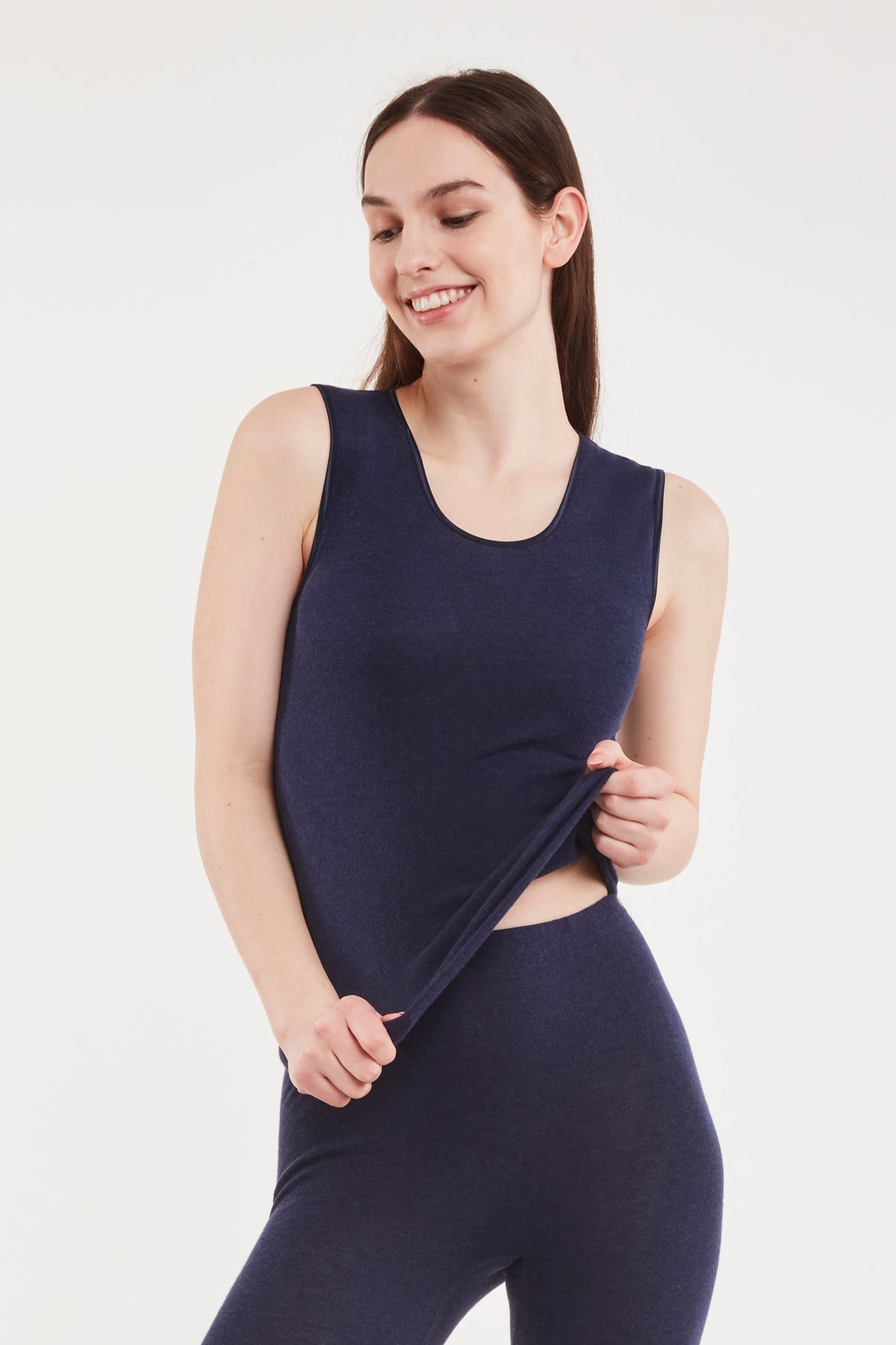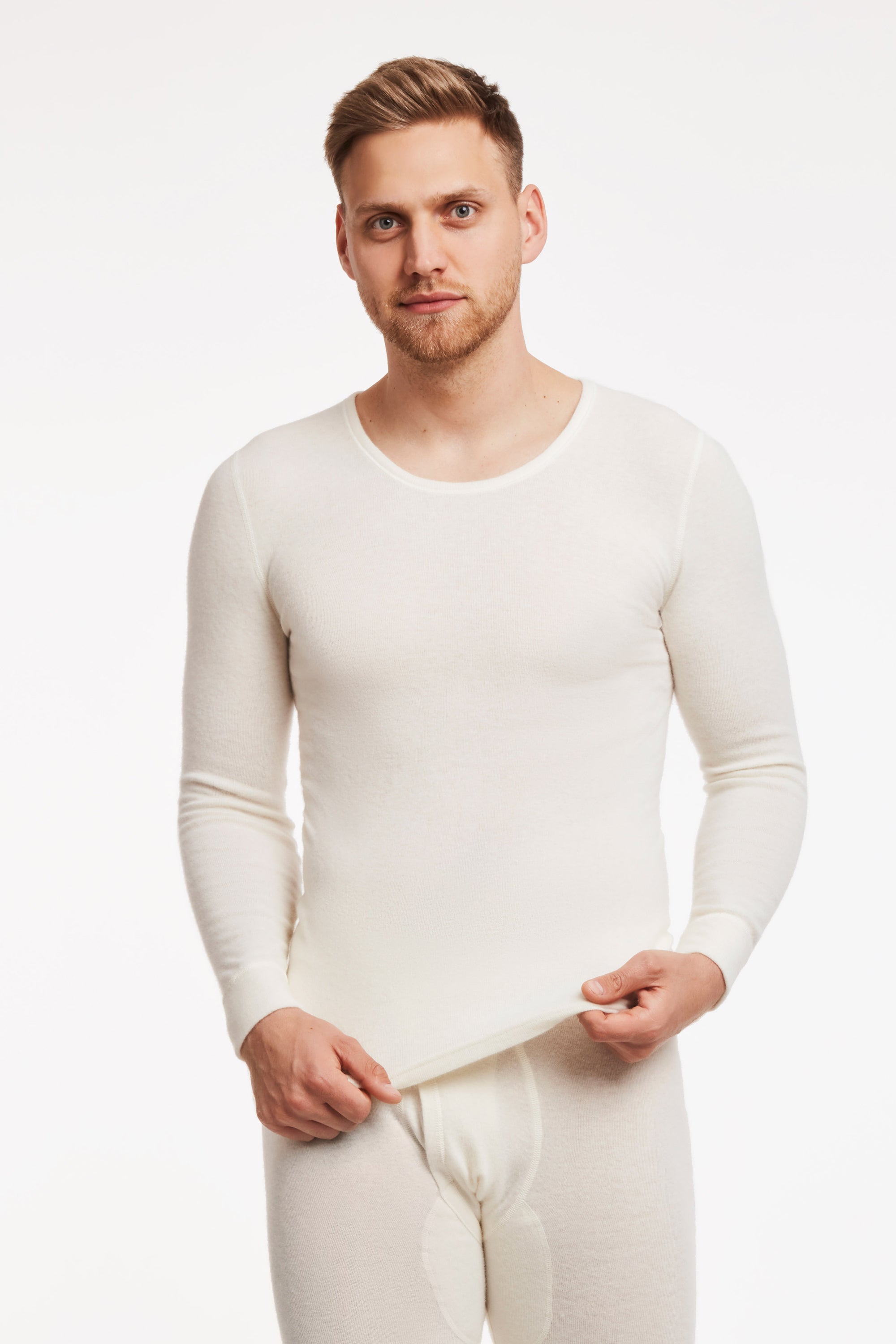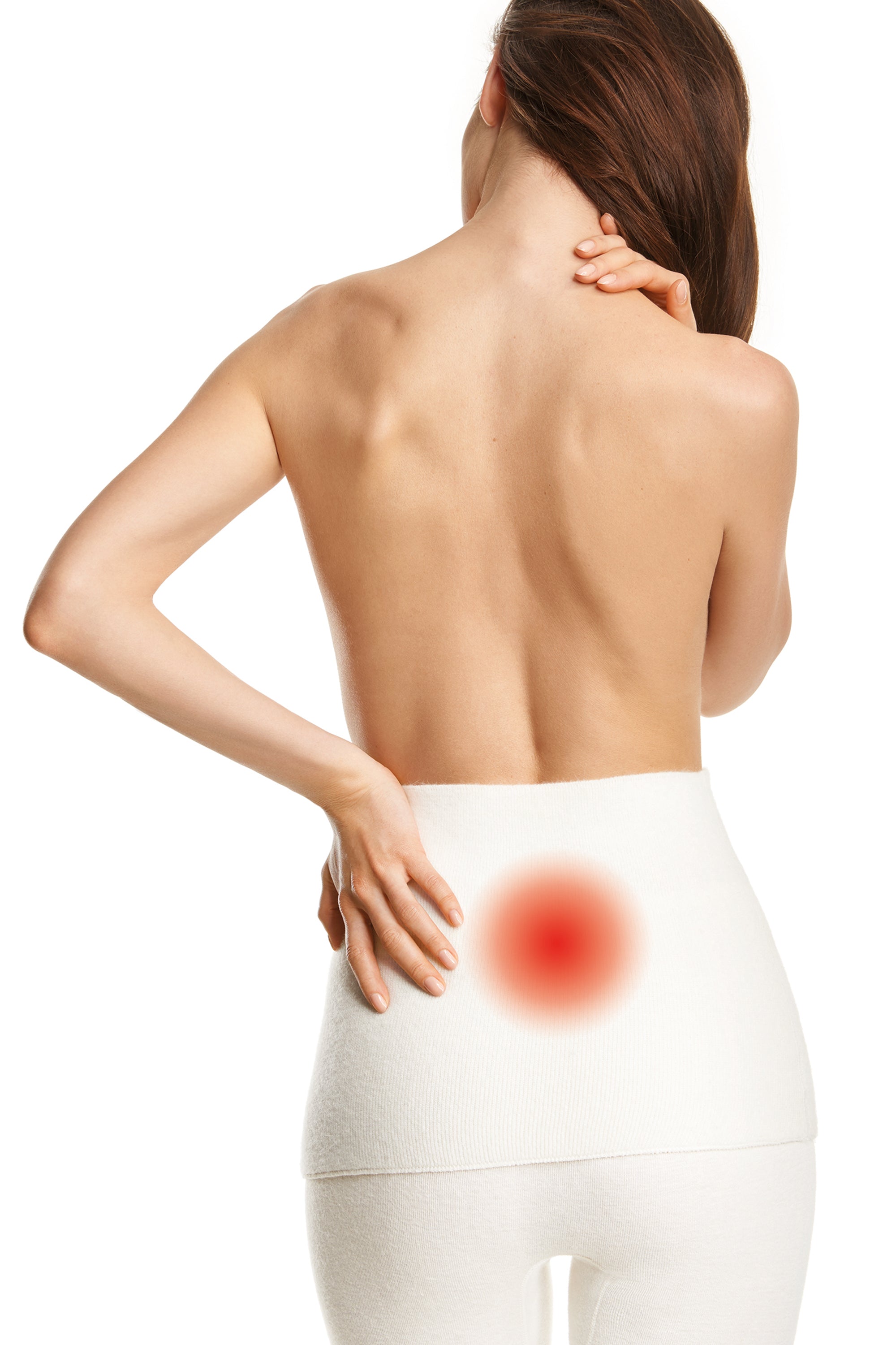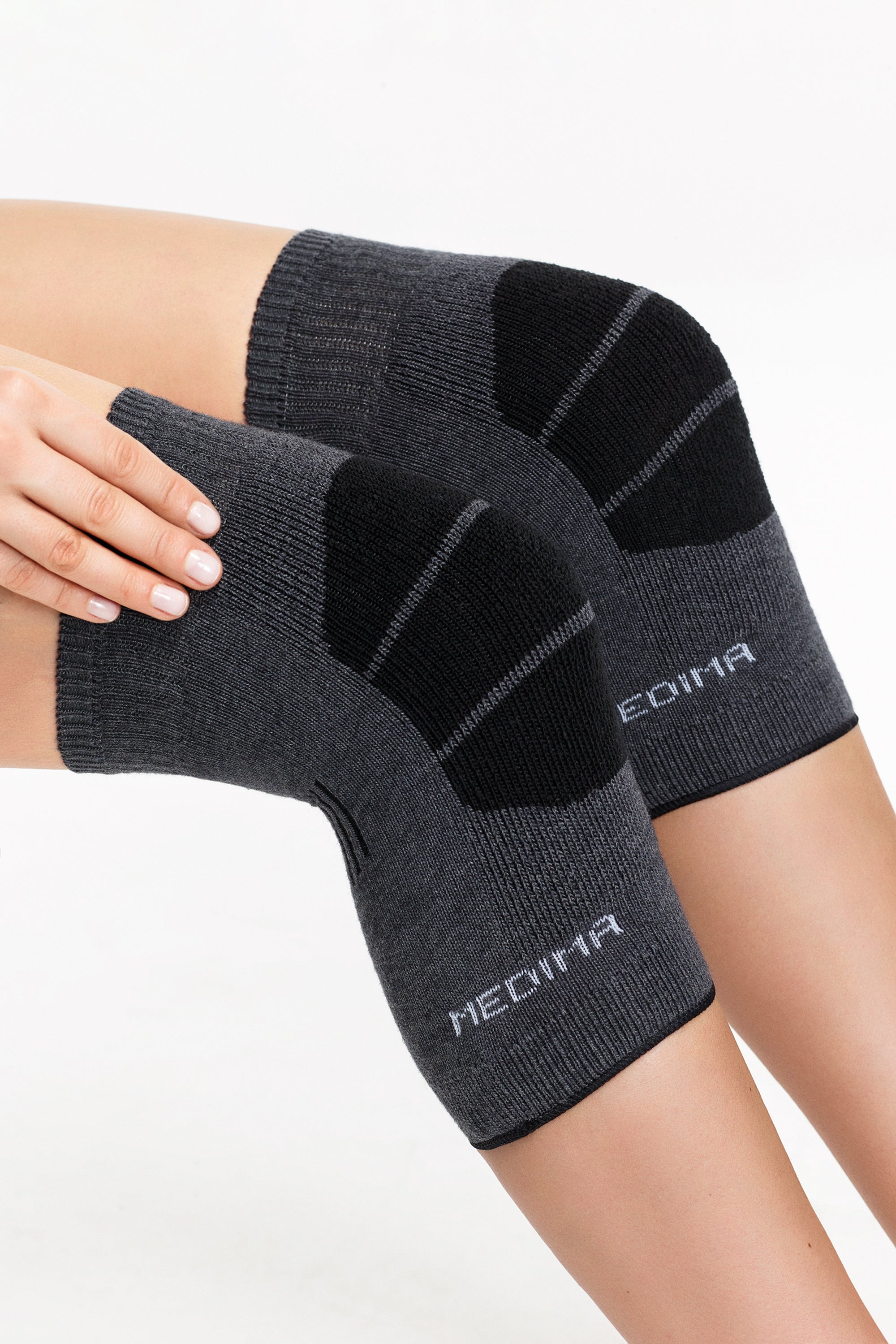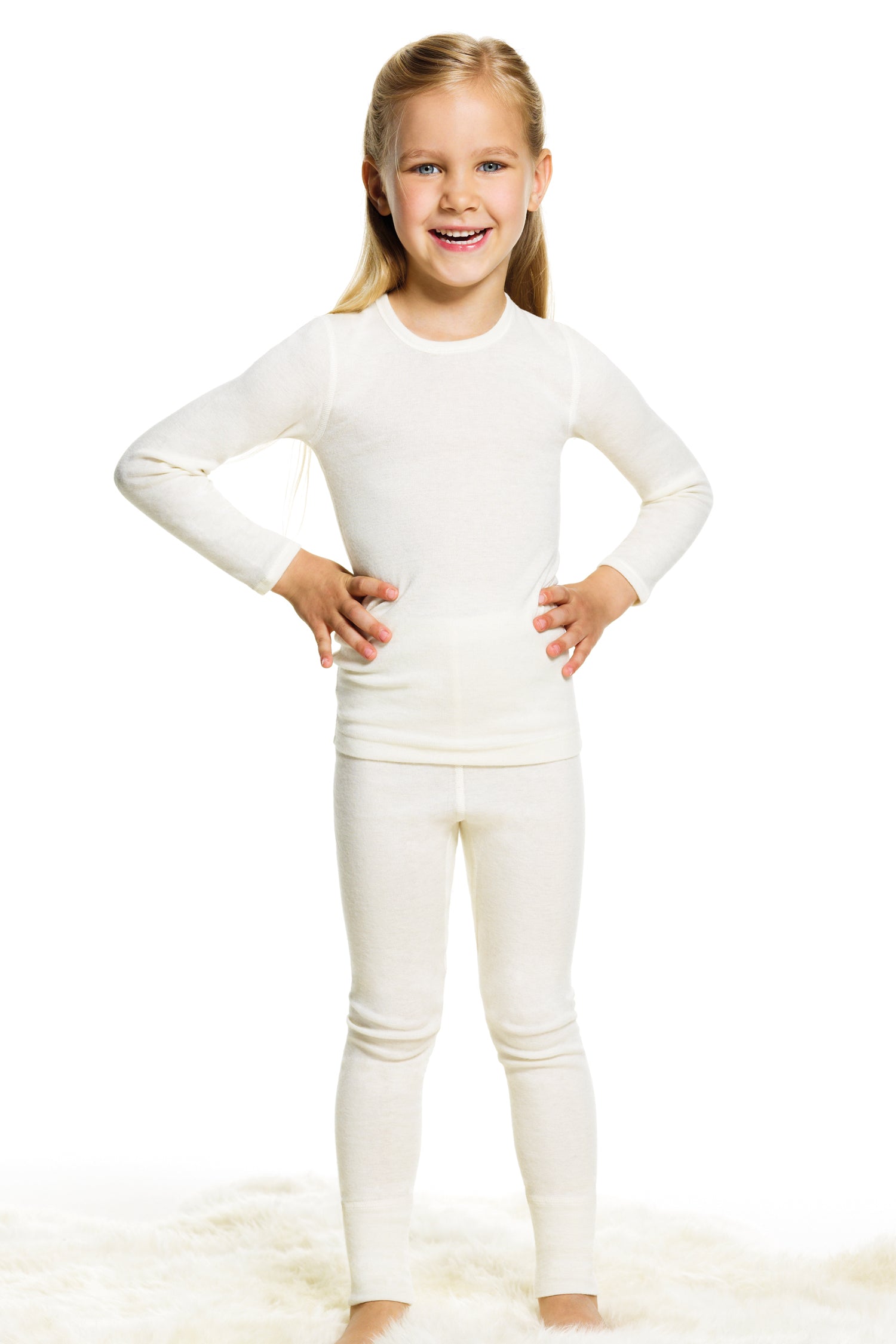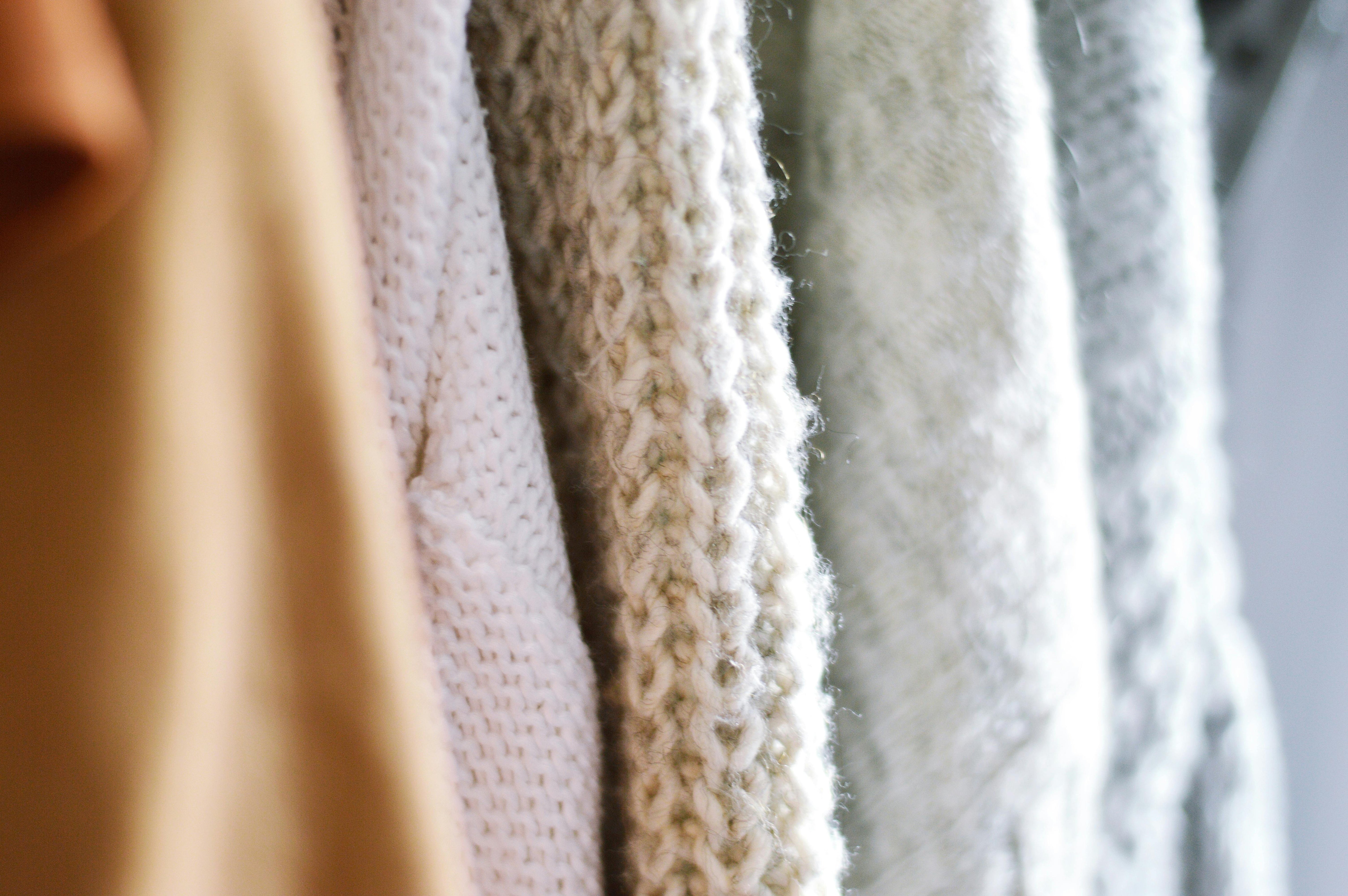cashmere
Wool of the Gods
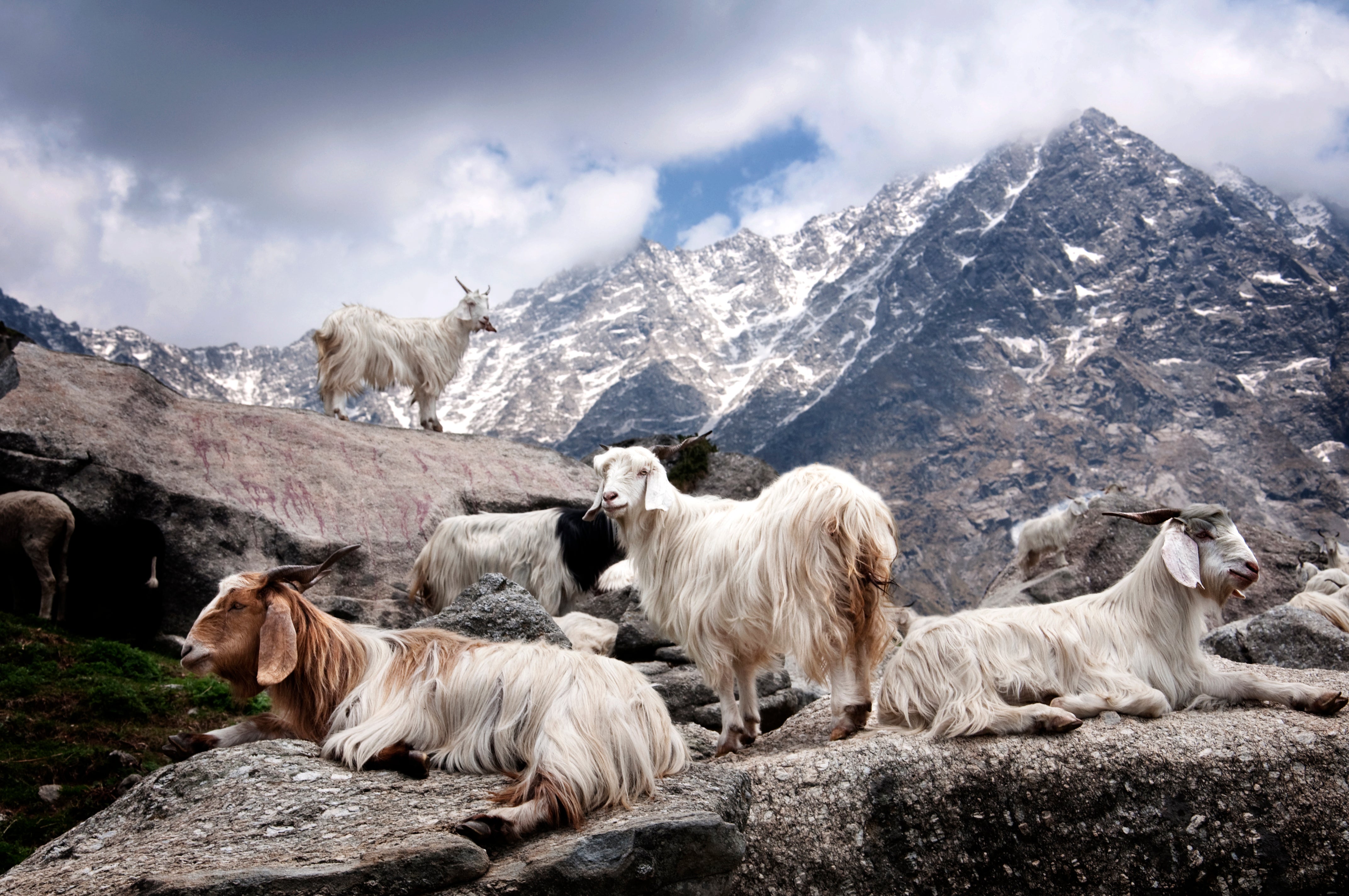
Special features
Cashmere, also known as the "wool of the gods," comes from the cashmere goat, native to the mountainous regions of Central Asia. The fine undercoat of these goats is particularly soft and insulating, making cashmere one of the most sought-after materials for high-quality underwear. Compared to ordinary wool, cashmere is lighter, warmer, and feels significantly softer against the skin.
The combination of cashmere with other natural fibers such as silk or modal is of particular quality. The smooth fibers of natural silk give the fabric a
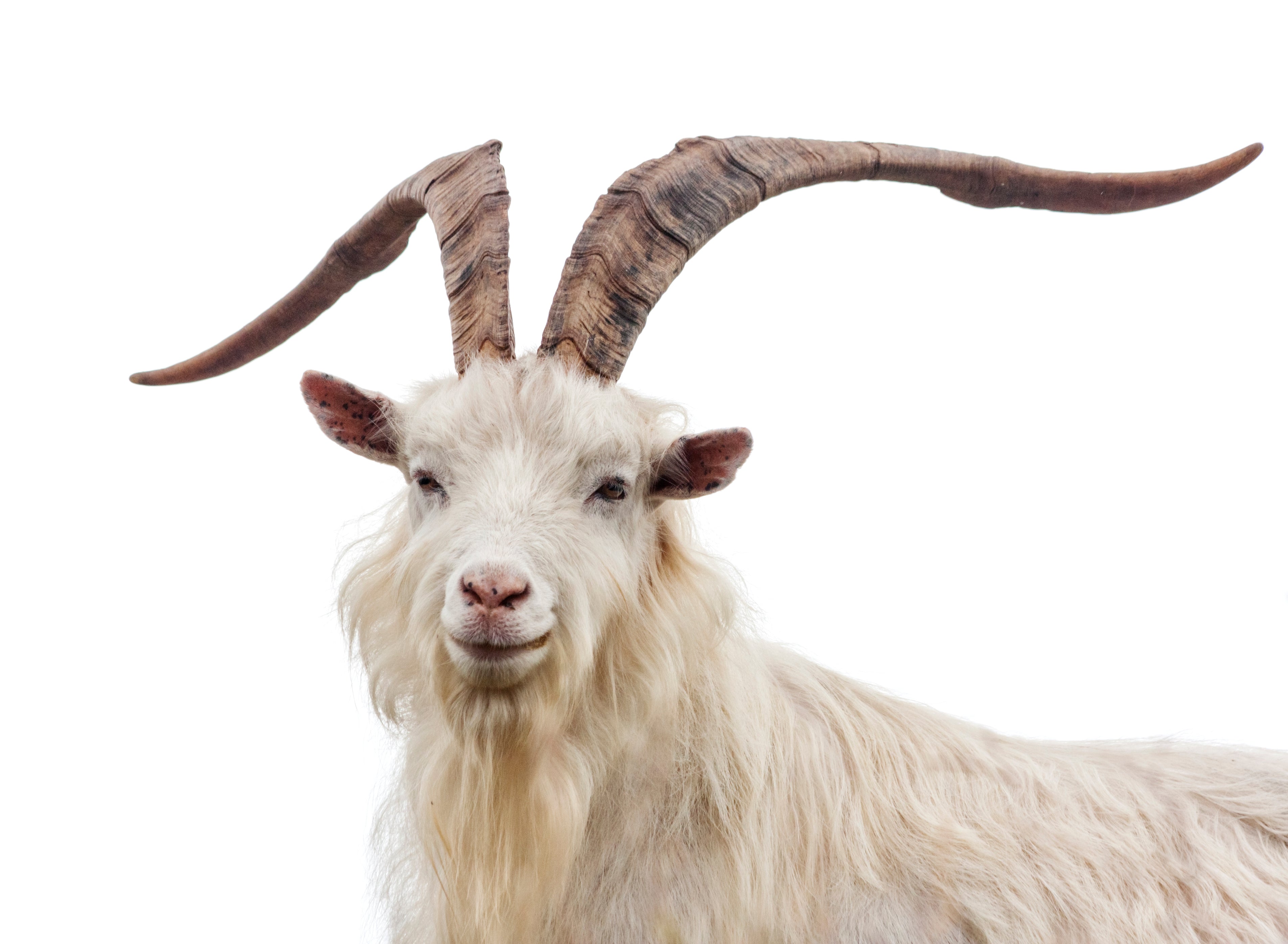
Quality features
- Fineness of the fibers:
High-quality cashmere is made from the finest and thinnest fibers that come from the undercoat of the cashmere goat. The finer the fibers, the softer and more luxurious the final product. - Grip and suppleness:
The feel refers to the softness and suppleness of the cashmere fabric. High-quality cashmere feels soft and smooth and leaves a pleasant sensation on the skin. - Warming properties:
Due to its fine fibers, high-quality cashmere offers exceptional thermal insulation at a low weight. It is able to effectively retain body heat while remaining breathable, making it an ideal material for lightly warming underwear.
-
Bounciness:
High-quality cashmere has a natural elasticity and springiness that makes it comfortable to wear and retains its shape over time.
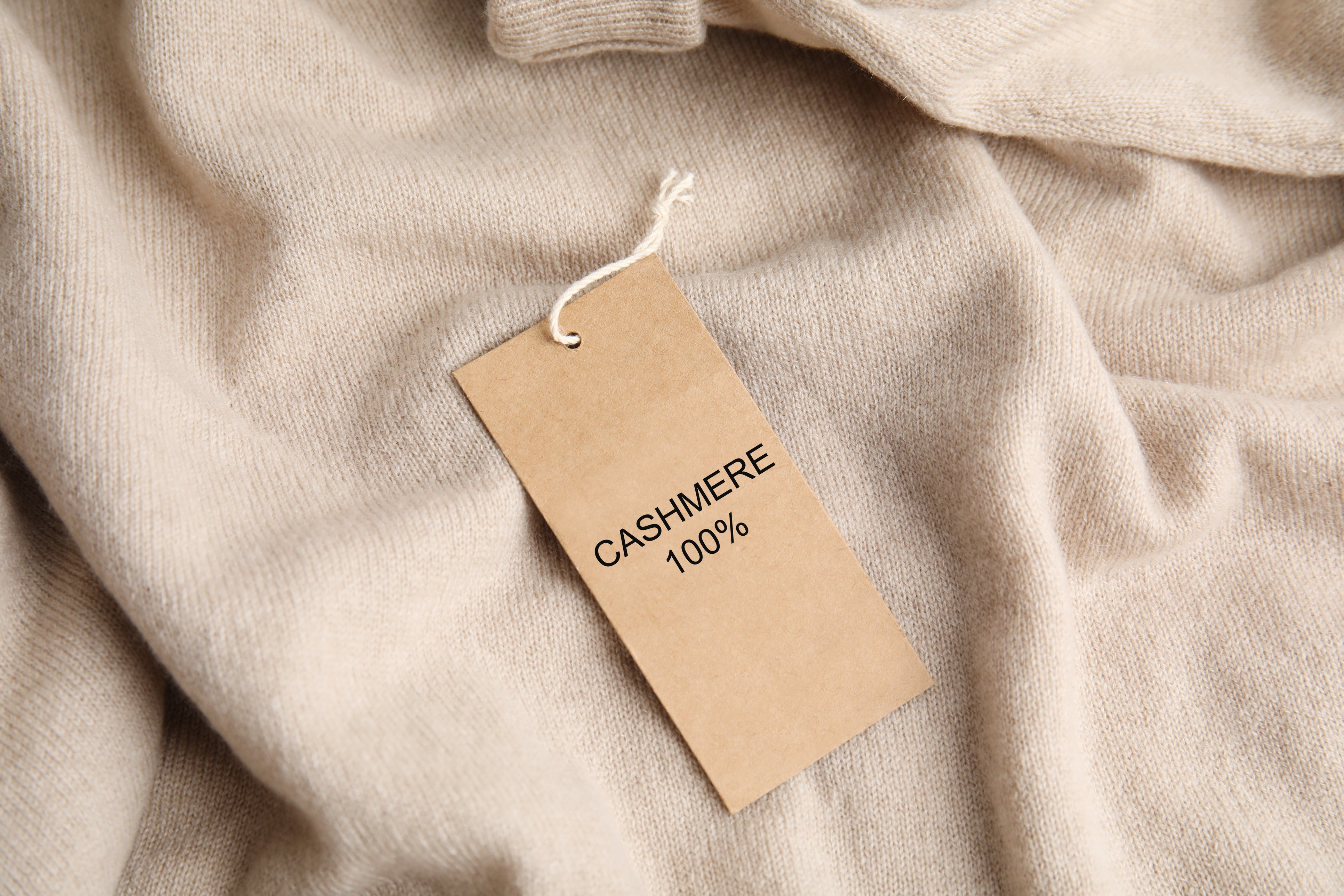
sustainability
In recent years, the fashion industry has increasingly focused on sustainable practices and ethical consumption, and cashmere production is no exception. Sustainable cashmere production aims to protect both the environment and the livelihoods of herders and growers, while maintaining the quality of the final product.
Animal welfare: A key aspect of sustainable cashmere production is the welfare of cashmere goats. This includes providing sufficient pasture, clean water, and appropriate care to ensure the animals' well-being.
Responsible grazing: Overgrazing is a serious environmental problem in the Kashmir regions. Sustainable cashmere production involves implementing grazing practices that preserve natural vegetation and soil quality to protect the ecological diversity and health of rangelands.
Supporting communities: Many cashmere producers work closely with local communities to improve their living standards and ensure fair wages for herders and growers. This can be achieved through fair trade practices, educational programs, and infrastructure projects.
Special features
Cashmere, also known as the "wool of the gods," comes from the cashmere goat, native to the mountainous regions of Central Asia. The fine undercoat of these goats is particularly soft and insulating, making cashmere one of the most sought-after materials for high-quality underwear. Compared to ordinary wool, cashmere is lighter, warmer, and feels significantly softer against the skin.
The combination of cashmere with other natural fibers such as silk or modal is of particular quality. The smooth fibers of natural silk give the fabric a
Quality features
- Fineness of the fibers:
High-quality cashmere is made from the finest and thinnest fibers that come from the undercoat of the cashmere goat. The finer the fibers, the softer and more luxurious the final product. - Grip and suppleness:
The feel refers to the softness and suppleness of the cashmere fabric. High-quality cashmere feels soft and smooth and leaves a pleasant sensation on the skin. - Warming properties:
Due to its fine fibers, high-quality cashmere offers exceptional thermal insulation at a low weight. It is able to effectively retain body heat while remaining breathable, making it an ideal material for lightly warming underwear.
-
Bounciness:
High-quality cashmere has a natural elasticity and springiness that makes it comfortable to wear and retains its shape over time.
sustainability
In recent years, the fashion industry has increasingly focused on sustainable practices and ethical consumption, and cashmere production is no exception. Sustainable cashmere production aims to protect both the environment and the livelihoods of herders and growers, while maintaining the quality of the final product.
Animal welfare: A key aspect of sustainable cashmere production is the welfare of cashmere goats. This includes providing sufficient pasture, clean water, and appropriate care to ensure the animals' well-being.
Responsible grazing: Overgrazing is a serious environmental problem in the Kashmir regions. Sustainable cashmere production involves implementing grazing practices that preserve natural vegetation and soil quality to protect the ecological diversity and health of rangelands.
Supporting communities: Many cashmere producers work closely with local communities to improve their living standards and ensure fair wages for herders and growers. This can be achieved through fair trade practices, educational programs, and infrastructure projects.



silk
Fascination for millennia
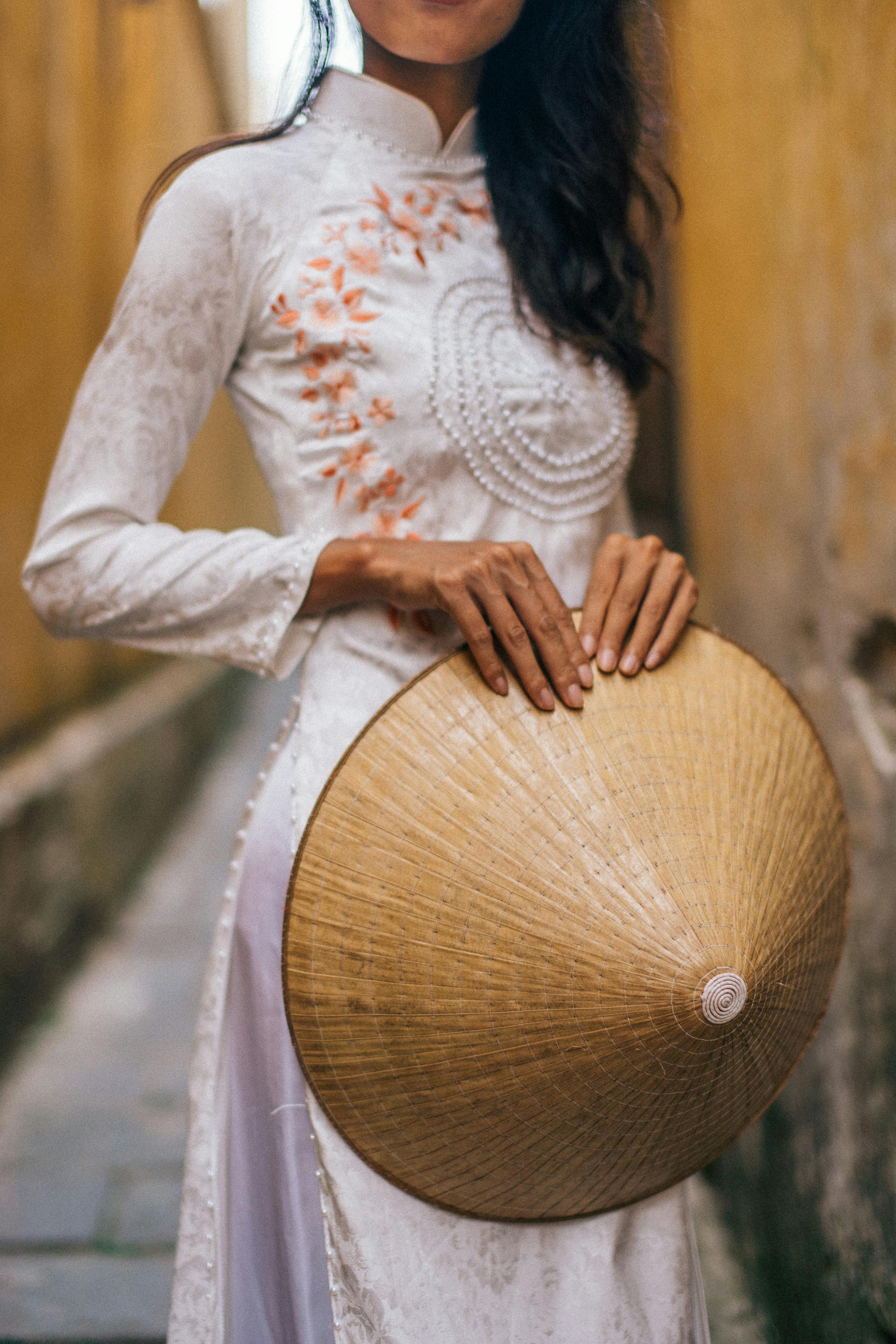
Story
The discovery of silk is often associated with ancient Chinese civilization, which began more than 5,000 years ago. Legend has it that Chinese Empress Xi Ling Shi accidentally discovered the silkworm when she dropped a cocoon into a cup of tea and noticed the fine thread unfurling. This discovery led to the development of silk production, a closely guarded Chinese secret for centuries.
Over time, silk production spread to India, Persia, and eventually the rest of the world, with the Silk Road playing a crucial role in the distribution of this coveted fiber. Until the Middle Ages, silk was a symbol of wealth and status and served as a trade commodity between East and West.
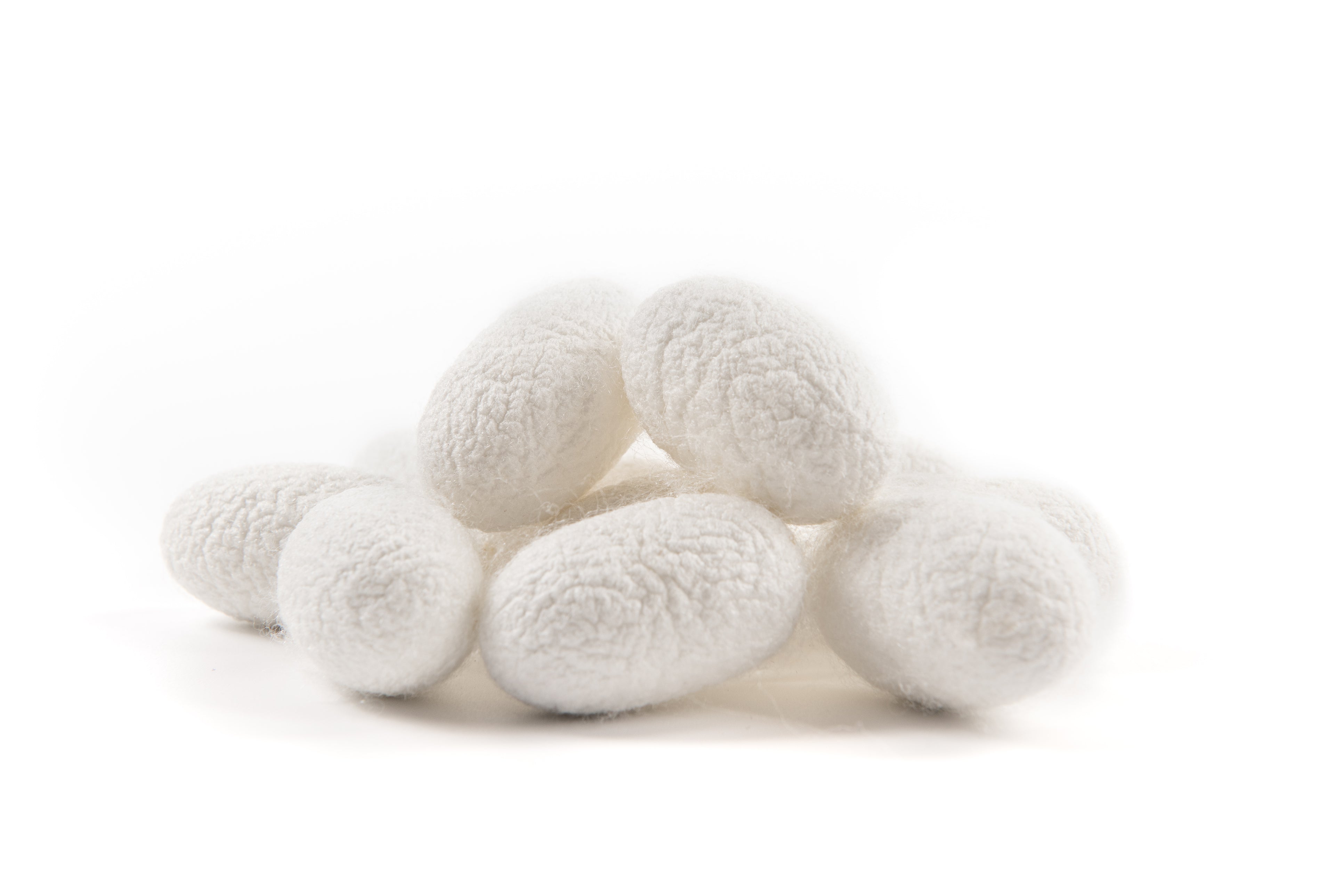
sustainability
While the fascination with silk remains undiminished, awareness of the environmental impacts and social aspects of its production is also growing. Traditional silk production can pose a number of challenges, including pollution, resource consumption, and working conditions. Therefore, it is crucial that the silk industry increasingly focuses on sustainable practices to minimize negative impacts and ensure the long-term availability of this valuable natural product.
A key component of sustainable silk production is the promotion of environmentally friendly cultivation practices. This includes the use of natural, organic methods to control pests and diseases, minimizing the use of pesticides and chemicals. Furthermore, the use of rainwater to irrigate mulberry plantations and energy efficiency in silk processing can help reduce the environmental footprint of silk production.
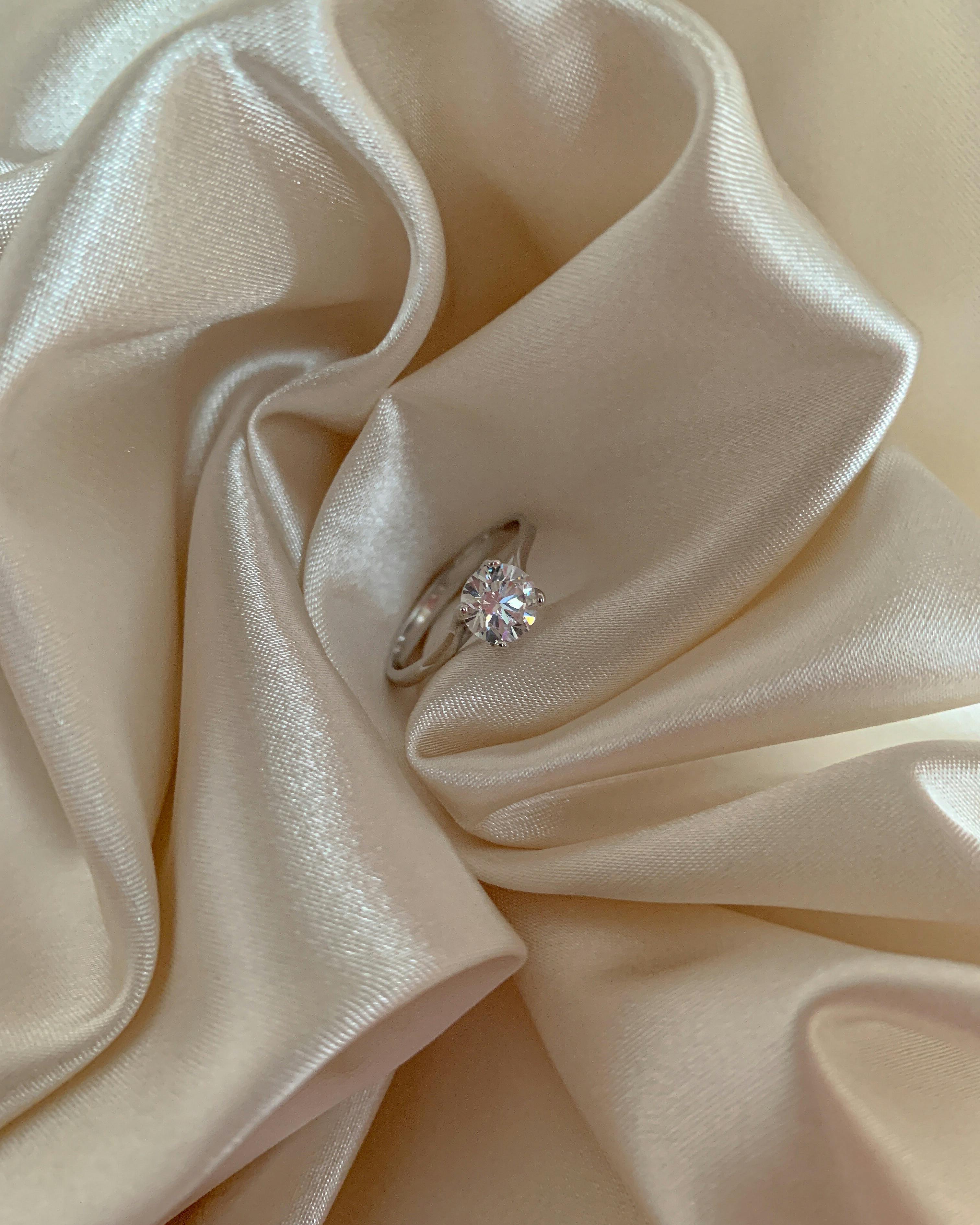
Quality features
Thanks to its fascinating properties and diverse applications, natural silk continues to hold a firm place in the fashion world, which is currently often dominated by synthetic materials. Even in today's modern world, silk reminds us of the beauty and versatility of natural raw materials.
- Smoothness and suppleness:
Real silk feels exceptionally smooth and supple against the skin. This unique texture is the result of the regular arrangement of the silk fibers.
- Natural shine:
The natural luster of silk is incomparable. It is created by the structure of the silk fibers, which reflect light in a unique way.
- Temperature regulation:
One of silk's most remarkable properties is its ability to regulate body heat. In winter, silk insulates and keeps you warm, while in summer it's cool and breathable.
- Hypoallergenicity:
Real silk is naturally hypoallergenic and can help reduce skin irritation and allergies.
Story
The discovery of silk is often associated with ancient Chinese civilization, which began more than 5,000 years ago. Legend has it that Chinese Empress Xi Ling Shi accidentally discovered the silkworm when she dropped a cocoon into a cup of tea and noticed the fine thread unfurling. This discovery led to the development of silk production, a closely guarded Chinese secret for centuries.
Over time, silk production spread to India, Persia, and eventually the rest of the world, with the Silk Road playing a crucial role in the distribution of this coveted fiber. Until the Middle Ages, silk was a symbol of wealth and status and served as a trade commodity between East and West.
sustainability
While the fascination with silk remains undiminished, awareness of the environmental impacts and social aspects of its production is also growing. Traditional silk production can pose a number of challenges, including pollution, resource consumption, and working conditions. Therefore, it is crucial that the silk industry increasingly focuses on sustainable practices to minimize negative impacts and ensure the long-term availability of this valuable natural product.
A key component of sustainable silk production is the promotion of environmentally friendly cultivation practices. This includes the use of natural, organic methods to control pests and diseases, minimizing the use of pesticides and chemicals. Furthermore, the use of rainwater to irrigate mulberry plantations and energy efficiency in silk processing can help reduce the environmental footprint of silk production.
Quality features
Thanks to its fascinating properties and diverse applications, natural silk continues to hold a firm place in the fashion world, which is currently often dominated by synthetic materials. Even in today's modern world, silk reminds us of the beauty and versatility of natural raw materials.
- Smoothness and suppleness:
Real silk feels exceptionally smooth and supple against the skin. This unique texture is the result of the regular arrangement of the silk fibers.
- Natural shine:
The natural luster of silk is incomparable. It is created by the structure of the silk fibers, which reflect light in a unique way.
- Temperature regulation:
One of silk's most remarkable properties is its ability to regulate body heat. In winter, silk insulates and keeps you warm, while in summer it's cool and breathable.
- Hypoallergenicity:
Real silk is naturally hypoallergenic and can help reduce skin irritation and allergies.



Modal
Natural polymer from cellulose
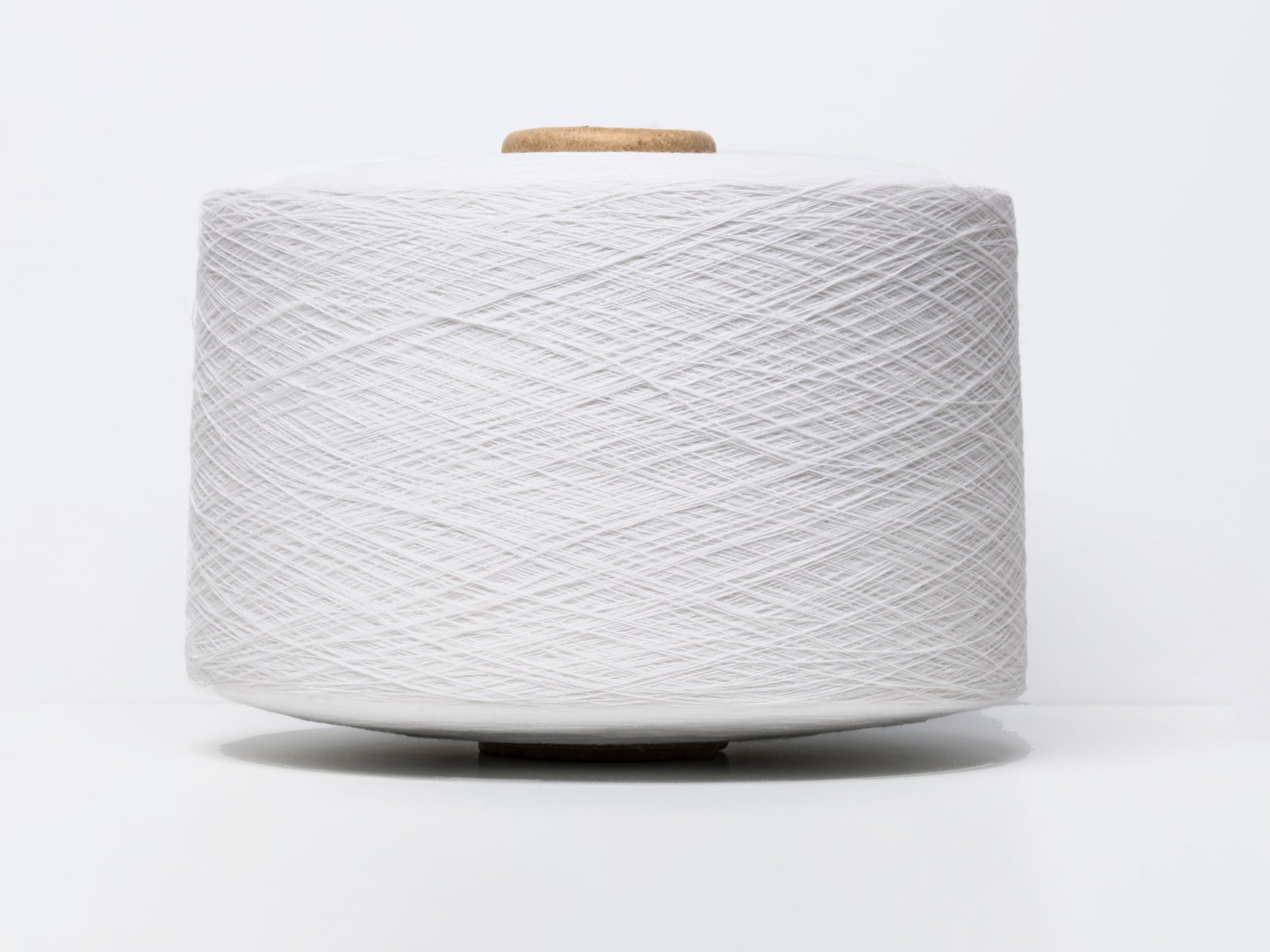
Discovery and production
Modal is a fiber derived from cellulose, a natural polymer found in plant cell walls. However, unlike traditional cellulosic fibers like cotton or viscose, modal is produced through a special manufacturing process known as the "lyocell process." This process involves dissolving cellulose in a solution and then spinning it into fibers. The main raw material for making modal is beechwood, although other woods such as eucalyptus and pine can also be used.
The discovery and commercial use of modal began in the 1950s with the development of the lyocell process. Since then, modal has become one of the leading cellulosic fibers in the textile industry, valued for its exceptional softness, strength, and versatility.
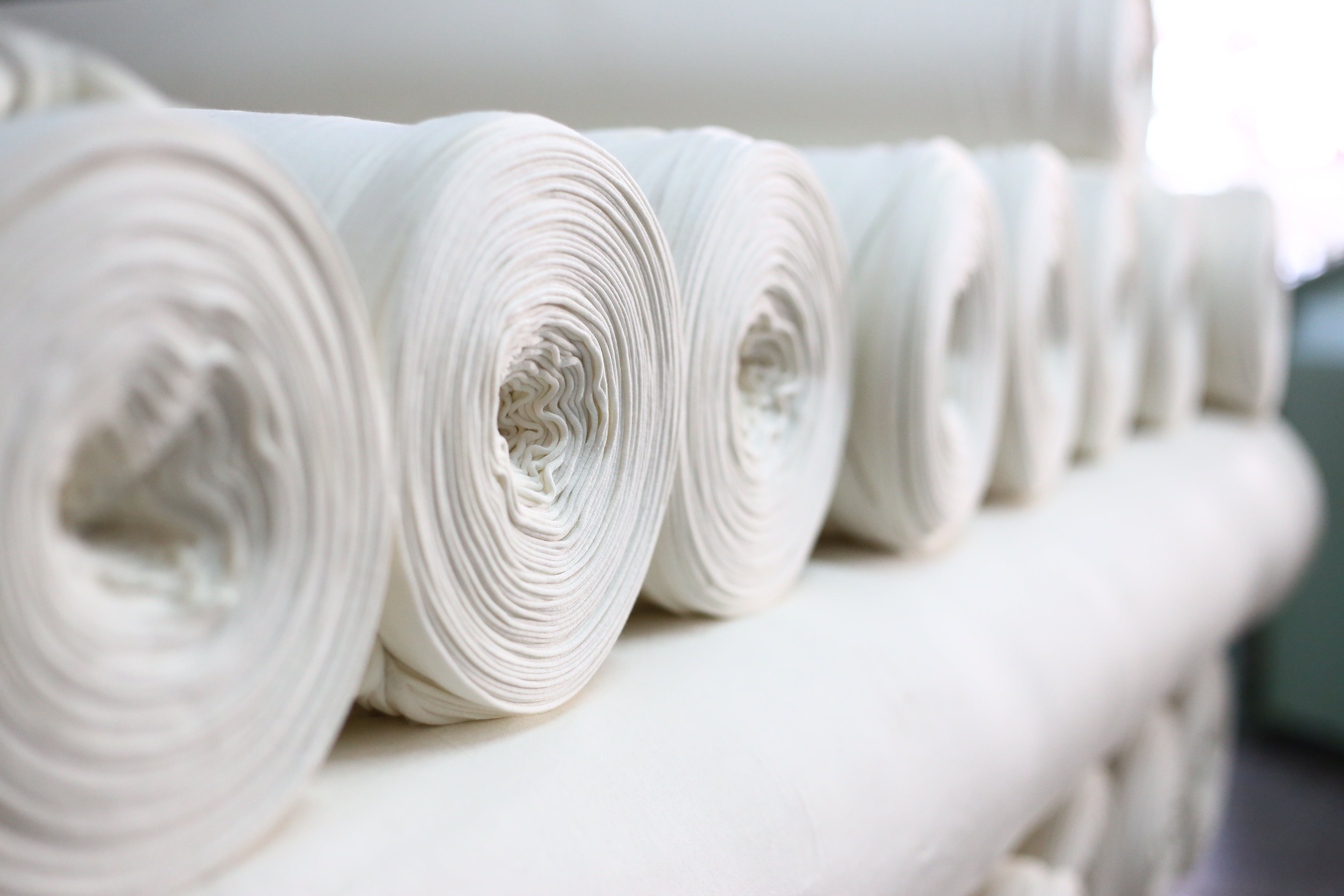
Characteristics
Modal has a number of unique properties that distinguish it from other fibers and make it a popular material for a wide range of applications:
- Softness and Smoothness : Modal is known for its silky softness and smoothness, making it an extremely comfortable material for the skin. Even after repeated washing, modal retains its softness, making it an ideal choice for clothing worn next to the skin.
- Breathability and moisture management : Modal is exceptionally breathable and can effectively wick away moisture, keeping you dry and comfortable even in humid conditions.
- Colorfastness and luster : Modal absorbs dyes particularly well and retains its colors even after many washes. Furthermore, its smooth surface gives the colors a natural luster, giving Modal products a luxurious appearance.
- Environmental friendliness : Modal is made from sustainably managed beech forests, making it an eco-friendly alternative to traditional fibers like cotton. Modal's manufacturing process also requires less water and energy compared to other cellulosic fibers like viscose, resulting in an overall lower environmental impact.

Areas of application
Due to its unique properties, Modal is used in a wide variety of applications, including:
- Clothing: Modal is widely used in the manufacture of garments such as T-shirts, underwear, nightwear and dresses due to its softness, breathability and moisture management.
- Home textiles: Modal is also used in the production of bed linen, towels and duvets due to its softness and colorfastness.
- Technical textiles: Due to its strength and moisture-regulating properties, Modal is also used in technical textiles such as outdoor clothing and sports equipment.
Discovery and production
Modal is a fiber derived from cellulose, a natural polymer found in plant cell walls. However, unlike traditional cellulosic fibers like cotton or viscose, modal is produced through a special manufacturing process known as the "lyocell process." This process involves dissolving cellulose in a solution and then spinning it into fibers. The main raw material for making modal is beechwood, although other woods such as eucalyptus and pine can also be used.
The discovery and commercial use of modal began in the 1950s with the development of the lyocell process. Since then, modal has become one of the leading cellulosic fibers in the textile industry, valued for its exceptional softness, strength, and versatility.
Characteristics
Modal has a number of unique properties that distinguish it from other fibers and make it a popular material for a wide range of applications:
- Softness and Smoothness : Modal is known for its silky softness and smoothness, making it an extremely comfortable material for the skin. Even after repeated washing, modal retains its softness, making it an ideal choice for clothing worn next to the skin.
- Breathability and moisture management : Modal is exceptionally breathable and can effectively wick away moisture, keeping you dry and comfortable even in humid conditions.
- Colorfastness and luster : Modal absorbs dyes particularly well and retains its colors even after many washes. Furthermore, its smooth surface gives the colors a natural luster, giving Modal products a luxurious appearance.
- Environmental friendliness : Modal is made from sustainably managed beech forests, making it an eco-friendly alternative to traditional fibers like cotton. Modal's manufacturing process also requires less water and energy compared to other cellulosic fibers like viscose, resulting in an overall lower environmental impact.
Areas of application
Due to its unique properties, Modal is used in a wide variety of applications, including:
- Clothing: Modal is widely used in the manufacture of garments such as T-shirts, underwear, nightwear and dresses due to its softness, breathability and moisture management.
- Home textiles: Modal is also used in the production of bed linen, towels and duvets due to its softness and colorfastness.
- Technical textiles: Due to its strength and moisture-regulating properties, Modal is also used in technical textiles such as outdoor clothing and sports equipment.



Cotton
The best-known natural fiber
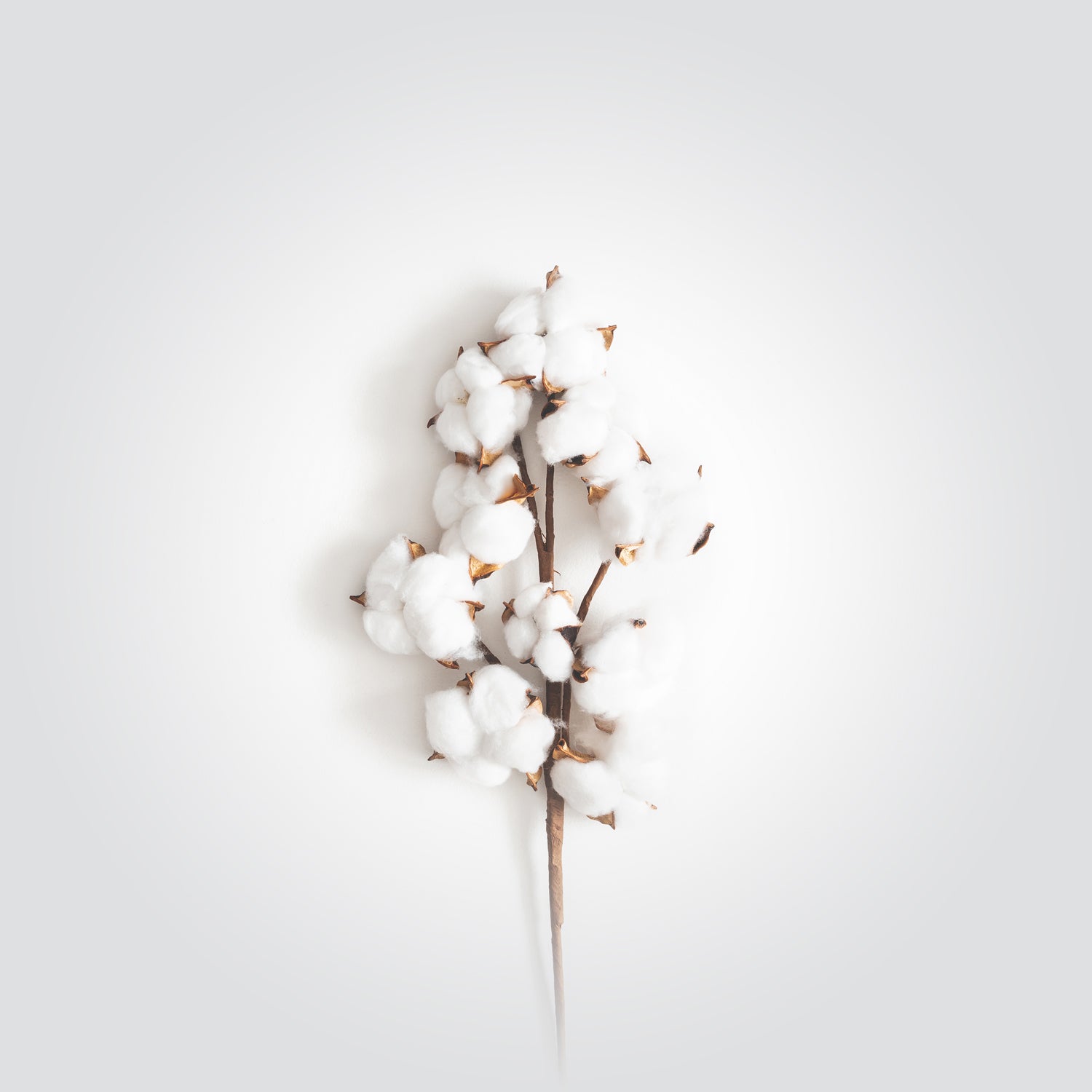
Characteristics
Cotton is by far the most well-known natural fiber in our country. It consists of approximately 91 percent cellulose, which is extracted from the fruit capsules of the cotton plant.
Cotton is not only a pleasantly soft and lightweight material, it is also particularly robust, very tear-resistant, abrasion-resistant, and resistant to acids. Due to its fineness, cotton is skin-friendly, breathable, and cuddly, making it one of the most popular natural fibers worldwide. However, even within cotton, there are significant differences in quality.

Mercerized cotton
Cotton consists of shiny fibers filled with cell sap. When this dries after harvesting, the fiber's surface curls and loses its luster. Mercerized cotton is subsequently treated with concentrated caustic soda while under tension. This not only restores the cotton fibers to their original luster, but also makes the resulting yarn more tear-resistant and dimensionally stable. Because mercerization is complex and expensive, mercerized cotton is primarily used for particularly high-quality yarns and fabrics.
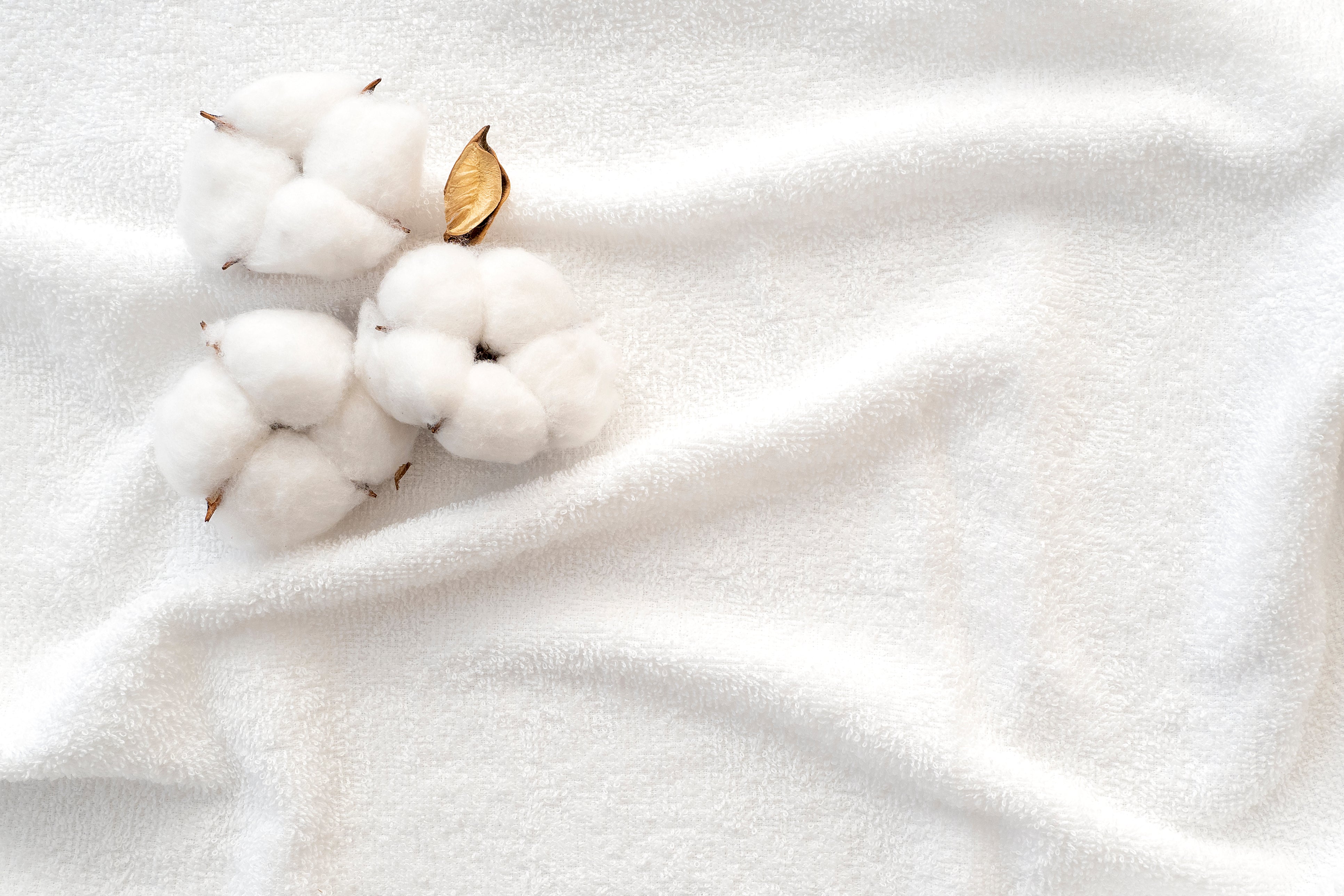
organic cotton
Unlike conventional farming, fibers from controlled organic farming (kbA) refer to cotton that is grown without the use of chemical fertilizers and/or synthetic pesticides. KbA cotton is harvested by hand, and no chemical defoliants are used during harvesting.
Characteristics
Cotton is by far the most well-known natural fiber in our country. It consists of approximately 91 percent cellulose, which is extracted from the fruit capsules of the cotton plant.
Cotton is not only a pleasantly soft and lightweight material, it is also particularly robust, very tear-resistant, abrasion-resistant, and resistant to acids. Due to its fineness, cotton is skin-friendly, breathable, and cuddly, making it one of the most popular natural fibers worldwide. However, even within cotton, there are significant differences in quality.
Mercerized cotton
Cotton consists of shiny fibers filled with cell sap. When this dries after harvesting, the fiber's surface curls and loses its luster. Mercerized cotton is subsequently treated with concentrated caustic soda while under tension. This not only restores the cotton fibers to their original luster, but also makes the resulting yarn more tear-resistant and dimensionally stable. Because mercerization is complex and expensive, mercerized cotton is primarily used for particularly high-quality yarns and fabrics.
organic cotton
Unlike conventional farming, fibers from controlled organic farming (kbA) refer to cotton that is grown without the use of chemical fertilizers and/or synthetic pesticides. KbA cotton is harvested by hand, and no chemical defoliants are used during harvesting.





